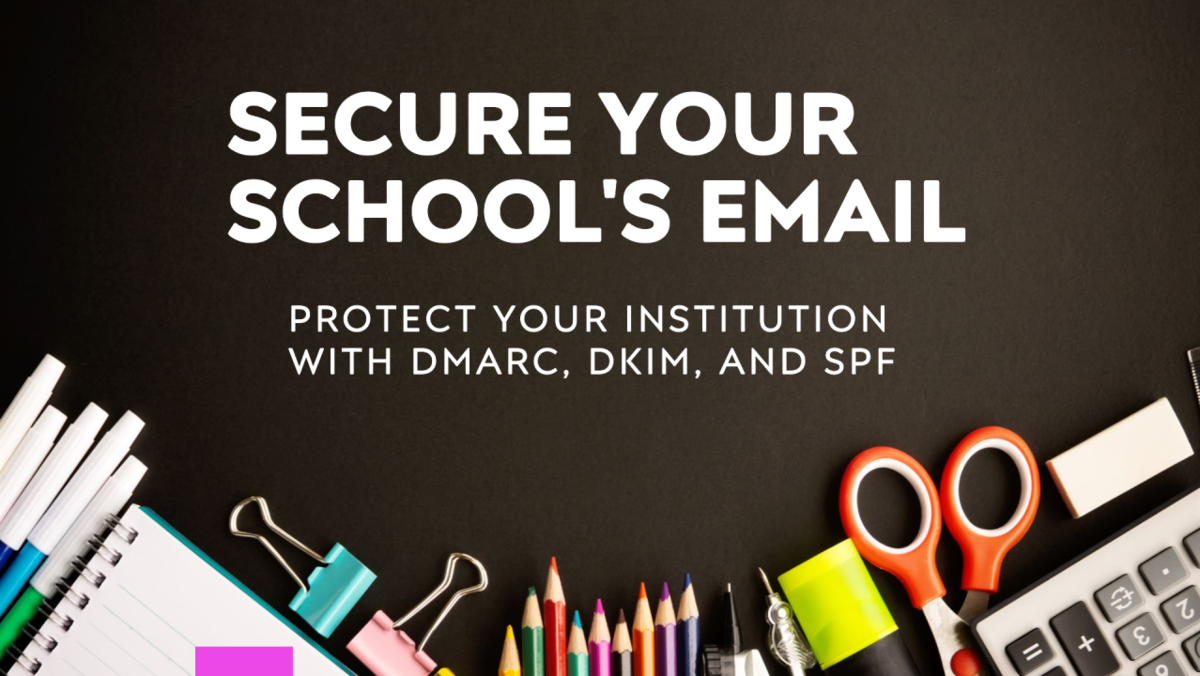What is DMARC?
DMARC is a protocol that helps protect email domains from being used for phishing and email spoofing. It ensures that only legitimate emails are sent from your domain and blocks unauthorized ones.
The School Analogy
SPF: The Student List 📋
Imagine SPF (Sender Policy Framework) as a list of students who have permission to be in the school building. This list is maintained by the school and includes only those students who are authorized to enter and participate in school activities.
If someone tries to enter the school who isn’t on this list, they are not allowed in. This process ensures that only those who are officially recognized and trusted by the school (email servers listed in the SPF record) can send messages on behalf of your domain. Just like how unauthorized visitors are kept out of the school, SPF helps prevent unauthorized email servers from sending messages that appear to come from your domain.
DKIM: The School ID 💳
DKIM (DomainKeys Identified Mail) works like a school ID card. Each student has a unique ID card that proves they belong at the school. When a student enters the building, the front desk checks their school ID to make sure it’s real and issued by the school. This prevents impostors from pretending to be students.
In the same way, DKIM adds a unique digital signature to each email sent from your domain. When an email arrives, the recipient’s server checks this digital signature against a public key to verify that the email truly came from your domain and hasn’t been tampered with. Just as the school ID card confirms a student’s identity, DKIM ensures the authenticity and integrity of your emails.
DMARC: The Principal 🏫
DMARC acts as the principal of the school. The principal oversees everything, setting the rules for how to handle anyone trying to sneak in without being on the student list (SPF) or without a valid school ID (DKIM). The principal also reviews reports on all the activities to ensure everything is in order.
Need Help With Your Schools Technlogy?
Let's Chat
Get free expert advice on your school's next technology project.
Book NowHow DMARC Policies Work
None: The Observer 👀
The "None" policy is like the principal just watching who comes in without stopping anyone. This policy allows all emails through but collects data on who is trying to enter without proper authorization. It’s a way to understand the scale of the problem without causing disruptions.
Quarantine: The Detention Room 🚫
The "Quarantine" policy is like sending anyone with a suspicious school ID to the principal’s office for further review. These emails are marked as spam or junk. This means they aren’t immediately trusted and need to be looked at more closely. It helps catch potential impostors without blocking them outright.
Reject: The Strict Enforcer 🛑
The "Reject" policy is the strictest. The principal stops anyone without a proper school ID (DKIM) or who isn’t on the student list (SPF) from entering the school. Only real students are allowed in. This ensures that no fake emails can get through, providing the highest level of security.
Why Implement DMARC?
Just like a school protects its students and maintains order, DMARC helps protect your email domain and ensures only legitimate emails are sent on your behalf. By implementing DMARC, SPF, and DKIM, you can safeguard your domain against phishing and spoofing attacks.
Need help getting DMARC, DKIM, or SPF setup for your school? Book a free call.

